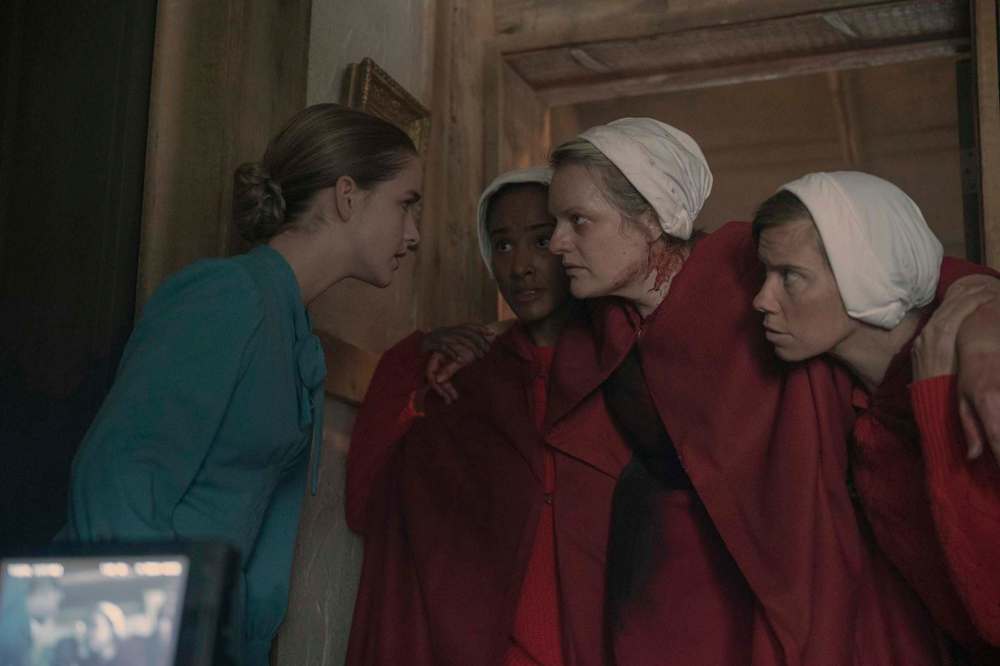The Handmaid’s Tale all dressed up but has no place to go
Read this article for free:
or
Already have an account? Log in here »
To continue reading, please subscribe:
Monthly Digital Subscription
$0 for the first 4 weeks*
- Enjoy unlimited reading on winnipegfreepress.com
- Read the E-Edition, our digital replica newspaper
- Access News Break, our award-winning app
- Play interactive puzzles
*No charge for 4 weeks then price increases to the regular rate of $19.00 plus GST every four weeks. Offer available to new and qualified returning subscribers only. Cancel any time.
Monthly Digital Subscription
$4.75/week*
- Enjoy unlimited reading on winnipegfreepress.com
- Read the E-Edition, our digital replica newspaper
- Access News Break, our award-winning app
- Play interactive puzzles
*Billed as $19 plus GST every four weeks. Cancel any time.
To continue reading, please subscribe:
Add Free Press access to your Brandon Sun subscription for only an additional
$1 for the first 4 weeks*
*Your next subscription payment will increase by $1.00 and you will be charged $16.99 plus GST for four weeks. After four weeks, your payment will increase to $23.99 plus GST every four weeks.
Read unlimited articles for free today:
or
Already have an account? Log in here »
Hey there, time traveller!
This article was published 29/04/2021 (1688 days ago), so information in it may no longer be current.
The Handmaid’s Tale, a dystopian vision of a fundamentalist regime in which women are treated as chattel, blazed onto screens back in 2017 with ferocious topical energy, focused visual style and incendiary work by Elisabeth Moss as the handmaid June.
It has since come to embody one of the glummer trends of television’s new golden age — Prestige TV that hangs around too long and ends up becoming Prestige-Adjacent TV. The Handmaid’s Tale still has great-looking production values and hard-hitting performances from A-list actors, but story-wise, it has nowhere to go.
In this fourth season (now on Crave, with new episodes Wednesdays at 8 p.m.), there are a lot of familiar Gilead sights. We see the circles under June’s eyes getting darker and darker. We see sinister needlework. We see female rebellion expressed through smoking, which, frankly, seems like a cigarette ad from the 1970s. We see pop songs ironically counterpointing violent action. (Cue the high body-count sequence choreographed to Suffragette City!)
Mostly, though, we watch June as she cycles — once again — through a sadistic slog of capture, torture and escape. At one exceptionally low point, after she’s been waterboarded by a man who likes to start off his pain-filled sessions with prayer, June tells her tormenters: “I’m ready. Please, just kill me.” Somewhere, the soul of this once excellent series is saying the same thing.
https://youtu.be/rg_160Be71g
Ever since the show departed from the sudden, ambiguous ending of Margaret Atwood’s novel, it has devolved into a grim, graphically violent version of Groundhog Day. Seasons 2 and 3 did allow The Handmaid’s Tale to do more of the things it does best, including its queasily fascinating world-building.
We saw more of the structure of Gilead, its theocratic hierarchy meticulously conveyed through the show’s design. We travelled to Washington, D.C., Gilead’s transformed capital, to take in fascist panoramas of power and submission. And of course, we got more Canada. As a haven for Gilead refugees, our country is depicted as place of benevolent bureaucracy and coniferous trees.
But for all the spectacle, the series never achieved narrative traction. After a stalled-out Season 3 alienated a lot of viewers, showrunner Bruce Miller told reporters in February that this season would deliver.
The three episodes provided to Canadian critics don’t offer much in the way of momentum, however.

This new season begins where last season left off: After a battle with Gilead forces, June, suffering from a bullet wound, and the surviving members of the handmaid squad make it to a safe farm.
At this strange household, run by a 14-year-old child bride (Mckenna Grace) who is both pitiful and terrifying, June thinks about political action and its personal costs — people around her so often end up dead — and considers the line between revolution and revenge. For viewers, it soon becomes clear that in taking on her oppressors, June risks becoming more like them. When she makes a foray into murder as a group bonding exercise, we see that her motivations may be the opposite of Aunt Lydia’s, but her methods are increasingly similar.
Other narrative strands in Season 4 include the Toronto contingent, as June’s friend Moira (Samira Wiley) and husband Luke (O-T Fagbenle), along with other Gilead survivors, deal with the aftermath of their trauma and their complicated feelings about June’s decision to stay behind.
There are reports that this misery-fest will manage some form of catharsis by Episode 6.
Meanwhile, Fred and Serena Waterford (Joseph Fiennes and Yvonne Strahovski), June’s former oppressors, are being held in the coolest Canadian jail ever — raw concrete, floor-to-ceiling windows — in scenes that are basically nice-looking nonsense.
Ann Dowd’s Aunt Lydia continues to compel, as her faithful servant persona collides with her curdled contempt for her superiors. “I leave you to your work,” she says, after she gets dressed down by a panel of male commanders, and, wow, does she pack a lot of hostility into that last word. And Bradley Whitford is a welcome sight as the louche, self-loathing Commander Lawrence, an intellectual in a regime that doesn’t like intellectuals. But the writing never matches the actors’ work, and their scenes often feel contrived.
There are reports that this misery-fest will manage some form of catharsis by Episode 6. Still, if you’ve been watching June stare at the camera with her “I will burn this place down” look since 2017, that might not be enough. Maybe the flames are on the way in the fourth season of The Handmaid’s Tale, but the fire might be too little, too late.
alison.gillmor@freepress.mb.ca

Studying at the University of Winnipeg and later Toronto’s York University, Alison Gillmor planned to become an art historian. She ended up catching the journalism bug when she started as visual arts reviewer at the Winnipeg Free Press in 1992.
Our newsroom depends on a growing audience of readers to power our journalism. If you are not a paid reader, please consider becoming a subscriber.
Our newsroom depends on its audience of readers to power our journalism. Thank you for your support.







